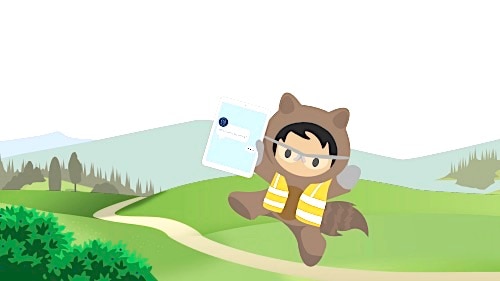The odds are you’ve engaged with a chatbot in the past seven days — even if you didn’t know it.
As more businesses tap into a multitude of chatbot applications and artificial intelligence (AI), usage is on the rise. Signs of chatbot growth are everywhere. In 2019, Google boasted they have 1 billion Google Assistant devices in market. During the 2018 cyber week, the kick off of the holiday season, the four most talked-about products on social media were all voice-enabled.
As consumers become more familiar with talking to voice-controlled devices, it stands to reason that they’ll be more open to “conversations” with non-humans. In fact, research from Survey Monkey and Drift show that only 38% of consumers actually want to talk with a human when engaging a brand. This isn’t to say they always prefer chatbots, but it highlights just how many ways there are to get answers today that don’t involve live human conversation — text messaging and self-service portals, just to name a few.
We’re entering a new world of brand and consumer interactions, with chatbots on the front line.
Chatbot statistics to know in 2019
We’ve broken this out into three sections covering statistics about chatbots, including:
- How customer service teams are using chatbots
- Customers’ impressions and expectations for chatbot use
- What defines a good chatbot experience
How are customer service teams using chatbots?
- 53% of service organizations expect to use chatbots within 18 months — a 136% growth rate that foreshadows a big role for the technology in the near future.
- 64% of agents with AI chatbots are able to spend most of their time solving complex problems, versus 50% of agents without AI chatbots.
These findings come from the latest “State of Service” survey of 3,500 customer service professionals around the world. Chatbots can help support triaging issues, and can even resolve them quickly, allowing humans to focus on the more complex issues that require their attention.
Among service teams already using AI chatbots, the most common uses are:
- Providing self-service in simple scenarios
- Gathering initial information about a service case before handing off to an agent
- Providing agents with guidance and recommendations as they handle cases
- Greeting customers when they call

What do customers think about chatbots?
- 58% of customers say emerging technologies such as chatbots and voice assistance have changed their expectations of companies.
- 54% of customers say companies need to transform how they engage with them.
- 77% of customers say chatbots will transform their expectations of companies in the next five years
These findings, from the second and third editions of “State of the Connected Customer” research, encompass both B2B buyer and consumer expectations. As new technologies take root, customers’ expectations are quickly growing. Customers demand real-time interactions — which is exactly what chatbots deliver. Given the choice between filling out a website form or getting answers from a chatbot, only 14% of customers would choose the form, according to this survey.
What makes a good chatbot experience?
Chatbots have one major advantage: they’re always on. In the Survey Monkey report, consumers rate this as one aspect of chatbots that makes it preferable over other methods of brand communications like email, live chat, or social media.

The other main marker of a great chatbot experience is speed. “Real-time customer service” is a phrase that gets knocked around quite a bit, but chatbots need to (and often do) actually deliver on it. The chart above shows that consumers expect chatbots to be nearly as quick to reply as a service rep in a face-to-face conversation. They also expect a chatbot to respond faster than a person on the telephone. The bottom line: speed wins.
Think about a chatbot in a store helping you shop. You can turn it on when you want it, ask if a particular item is in stock, and order your size to be shipped to your house. The entire process can be boiled down into the palm of your hand, sans human. But this doesn’t negate the fact that humans are still needed to handle more involved issues and the so-called soft skills (from handling complex customer requests to making customers feel at ease). In these situations, a good chatbot experience would require the bot to realizing the need for a real human connection and know how to make that a smooth transition for the customer. The “State of Service” research found that 80% of service decision makers believe AI is most effective when deployed with — rather than in place of — humans. In other words, a bot plus a human is better than either by themselves.
What’s next for chatbots?
The biggest fear consumers have with bots is that they will make a mistake — and sometimes they will, but so do humans. This will always be a concern, yet it will become less of one as more consumers engage with bots.
While many of us think of chatbots primarily as answer machines now, it’s not far off that the domain will expand.
The chart below shows how consumers say they would use chatbots. There’s some reservation around using chatbots for tasks like paying bills and purchasing items — but when money is involved, people are often more hesitant with new technology. It’s a natural part of the adoption of new technology, and if we look back to the dawn of ecommerce, the same trend unfolded.

While it’s too new for a majority of consumers to jump in on these uses of chatbots, that doesn’t mean companies shouldn’t innovate in this area. As the chart below shows, about one out of every five people would use a bot to pay a bill — a significant portion of your customer base.
UP NEXT: How do different generations use voice assistants?
With half of all Americans engaging with a chatbot at least once a week, it’s going to change things, and fast. Consumers love chatbots because of their always-on nature and instant response time. Beyond that, the experience must also be accurate and better than any alternative. If those conditions are met, it will be considered a good experience.
It’s only a matter of time before consumers prefer to speak, rather than type, their question. Looking ahead, as voice becomes a standard consumer interface, chatbots will need to evolve from pure text to a blend of inputs and outputs. Consumers may talk to their bot, while it reads out the instructions for assembly on a new product purchased, for example. Or vice versa — consumers may want to and type in a question and listen to the answer. Bots will need to be multi-modal to meet the consumers’ demand for speed.
Want more insights like this? Sign up for the 360 Highlights newsletter.




























